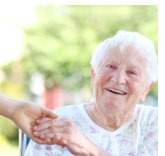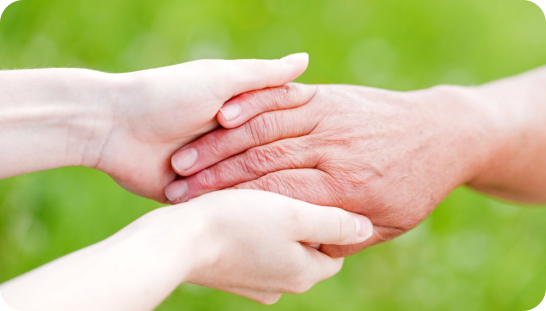Arthritis Pain Management: 7 Effective Ways To Find Relief

Older adults often have arthritis and its associated pain. Since such symptoms make it difficult to carry out everyday chores, many people turn to drugs for help. While pain medicines may give a lot of relief, they also have a lot of potential side effects and other difficulties that you might want to avoid.
The article explains how to create a successful treatment plan without the use of medications. These arthritis pain management techniques may help relieve pain, restore function, and give comfort with little or no adverse effects.
What is Arthritis & What Causes it?
Arthritis is inflammation of joints that causes pain and swelling. The most common type of arthritis, Osteoarthritis, occurs when cartilage wears down from overuse or injury. This can happen in any joint but most commonly occurs in joints in the knees, hips, and lower back.
The body’s aging process causes most arthritis. The body produces less collagen over time, responsible for healthy joints. When there is a lack of collagen, cartilage forms between bones to provide cushioning. However, this cartilage is not as strong as bone or muscle tissue. A breakdown in cartilage causes pain in the joints.
Any of the following may cause arthritis:
1. Aging: As people age, their joints become weaker and more prone to arthritis.
2. Injury: Many people have arthritis because of a previous injury to a joint. A common cause of injury is elderly falls.
3. Genetics: Some people have genes that make arthritis worse, and some people have genes that help prevent it.
4. Medications: Prescription medications can make arthritis worse by weakening the immune system. This causes the body to produce less collagen, which leads to more damage to the joints.
5. Stress: When you are under a lot of stress, your chances of having arthritis go up significantly.
6. Smoking: Smoking can damage cartilage and make it harder for joints to work properly. It also triples the risk of developing rheumatoid arthritis.
7. Obesity: Excess weight can add more stress to your joints and lead to more problems.
8. Infections and allergies: An infection could make arthritis symptoms worse and make it more difficult to control.
How Does Arthritis Affect Mobility?

Mobility is a function of the body’s joints. When a joint is stressed, it needs to be lubricated so that it can move smoothly. Lack of lubrication can cause pain and more severe injury. There are two main types of arthritis: osteoarthritis (OA) and rheumatoid arthritis (RA). They can both lead to severe complications of mobility impairment, but they are usually treated differently.
OA occurs primarily in the hands and knees, while RA affects many other joints, including the elbows, ankles, hips, and spine.
Mobility issues commonly associated with arthritis include:
- stiffness,
- weakness,
- loss of range of motion
- Pain upon movement.
When you have arthritis, you may find it hard to:
- Get up from a chair
- Climb stairs or get in and out of a car or bathtub
- Lift objects like a grocery bag or gallon of milk
- Brush your hair, teeth, or shave
- Wear shoes and laces
- Write, type or play cards
- Walk short distances or climb a flight of stairs
- Pick up children, carry a purse (or anything else)
Arthritis Pain Management
Here are The Seven Pain-Relieving Tips to Follow
Now that you know about the benefits of a healthy diet, exercise, and maintaining a healthy weight, let’s talk about some of the most effective ways to ease the pain brought on by arthritis.
EXERCISE GENTLY

Exercise is one of the most effective arthritis pain management tips. It’s not just what your doctor tells you to do. It’s an essential part of overall wellbeing and mental health. According to the Arthritis Foundation, “Staying active can reduce pain and disability from arthritis.”
Start slowly with gentle activities like stretching to prevent injury or making simple changes in your home, like adding grab bars in your bathroom. Then work up to more vigorous activities like swimming or tennis that are beneficial for both the body and mind (be sure to warm up and cool down before and after).
Keep an eye out for red flags when starting a new exercise routine, including pain while exercising, excessive tiredness that persists after several days of rest, or swelling in joints that lasts more than a day or two. These could all be signs of overdoing it – so take a break! Most importantly, find an exercise routine you enjoy because you lose it if you don’t use it!
RELAX AND REDUCE STRESS
You can reduce stress in many ways, including:
- Relaxing with a book or movie.
- Meditating.
- Practicing yoga.
- Hanging out with friends and family.
- Going for walks or spending time outdoors (if you can).
MANAGE YOUR WEIGHT

You can work to manage your weight safely, and it will help ease the strain on your joints. Weight-bearing exercises that involve balancing, jumping, or other high-impact moves can make arthritis worse. But you can still stay active by trying low-impact exercise options like walking, swimming, and biking.
If you want to lose weight to reduce pain and inflammation, set a goal of losing 1 pound per week. Losing more than 2 pounds per week may be unsafe if you have osteoarthritis or rheumatoid arthritis.
Losing small amounts of weight over time through healthy changes in your diet is more effective at reducing joint pain in the long run than trying fad diets that may not provide all the nutrients your body needs. Stay hydrated by drinking plenty of water and eating nutritious foods full of fruits and vegetables, whole grains, lean proteins, healthy fats like avocados and nuts, and avoid foods high in calories with little nutritional value, such as sodas or chips. Don’t skip meals because this can lead to overeating later in the day, which could cause weight gain. You should follow these arthritis pain management tips to avoid over-eating.
GET PHYSICAL HELP FROM A THERAPIST
A physical therapist can help relieve your pain and make your home safer. They can also help you improve your function, reduce pain, and prevent further damage. Physical therapy is a conservative treatment that can help you avoid surgery. It is one of the most effective ways to manage arthritis pain. The benefits of physical therapy include:
- Reduce stiffness and swelling
- Increase strength and flexibility
- Relieve arthritis pain
- Improve mobility
- Physical therapists are trained to work with people who have arthritis. They will ensure that your treatment plan is tailored to meet your specific needs and abilities.
LIMIT HEAT AND COLD
You might be tempted to use heat or ice every day, but it’s essential to limit the amount of time you apply either one. Too much heat could raise your pain level and induce swelling, while too much cold can numb a joint so much that you injure it without realizing it. In general, apply heat for 15 minutes at a time. If you need more relief after that, switch to cold for 15 minutes. Be sure to wrap heated items in a towel so they don’t burn your skin, and don’t apply ice directly to the skin.
BE CAREFUL WITH FOOD
There are also foods to avoid. Foods that cause inflammation to trigger your immune system or cause a weight gain can increase arthritis pain and worsen it.
The best arthritis diet is one that reduces inflammation in your body. You might try cutting back on these foods:
- Processed meats (hot dogs, lunch meat)
- Red meat
- Fries and other fried foods
- Sugar-sweetened beverages (soda pop)
- Dairy products (milk, cheese)
WATCH YOUR POSTURE

- Get up and move. Make sure to get up for a few minutes and stretch your muscles, no matter what you’re up to. Try these tips for stretches that work in even the most cramped places.
- Practice makes perfect. The best way to keep your posture in good shape is to practice it until it becomes second nature and, ideally, do things right before your bad habits can set in! Here are some easy ways to train yourself into better habits:
- Use an alarm on your phone or watch as a reminder. Set it off at regular intervals throughout the day, ideally every 20 minutes or so (if you can do this without disrupting your colleagues too much).
- Prop up a mirror behind your desk to check on how you look while seated at your desk. Slouching is most common when we’re sitting, but standing straight will help ease the stress on our joints and encourage better blood flow through our bodies—so why not give yourself an extra boost by keeping tabs on how well you’re doing?
- If all else fails, try tying one end of a piece of string around one wrist; leave the other end long enough that when pulled taut from where it’s tied down onto another stationary object (like a chair leg), its loose end reaches just over halfway up from where you sit down. Now, whenever slouching occurs throughout the day, this string will pull gently against whatever part of your body touches it first—this provides feedback that alerts us instantly to correct our posture!
Conclusion
When it comes to finding arthritis pain management, you should not feel ashamed or worry about being judged by your family members and doctors. Some options can help you deal with this debilitating disease.
We at Serenity Senior Care believe in enhancing your independence with the aid of good senior care.
We aim to provide exceptional senior care services to elderly clients who need our assistance by catering to their specific demands and requirements. Our senior care services have earned us a good reputation in the community and have received high marks from our clients.
If you have any questions regarding this blog post or need assistance with developing a senior care plan that suits your family and lifestyle needs, please do not hesitate to contact us today.


